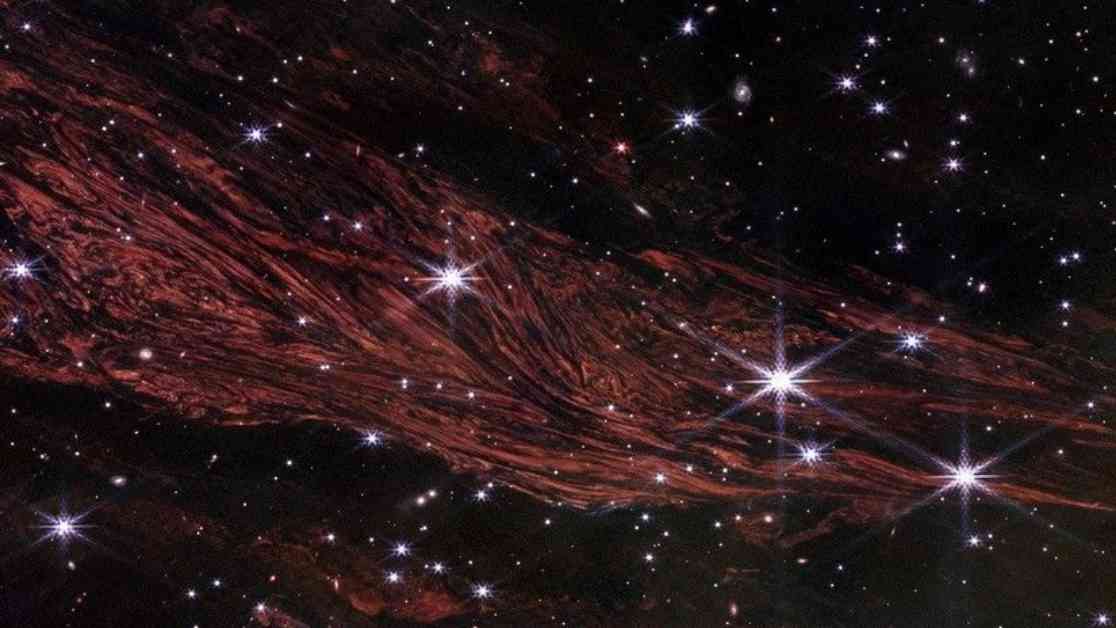In the vast expanse of space, a mysterious phenomenon has captured the attention of astronomers and space enthusiasts alike. The James Webb Space Telescope has unveiled a mesmerizing ‘light echo’ near the supernova remnant Cassiopeia A, shedding light on the interstellar medium in a breathtaking display of cosmic beauty.
Unveiling the Interstellar Medium
Located approximately 11,000 light-years away in the constellation Cassiopeia, the glowing interstellar medium captured by the James Webb Space Telescope offers a glimpse into the intricate dance of gas and dust that fills the void between stars. The light emanating from the supernova remnant Cassiopeia A, believed to have reached Earth in the 1660s, has exposed a stunning array of glowing material surrounding the remnants of a long-dead star.
The images captured by the JWST showcase a captivating phenomenon known as a light echo, a subtle reflection of the light emitted during a supernova explosion. As a star reaches the end of its life cycle and explodes, it releases intense radiation that illuminates the surrounding gas and dust, creating an ethereal ‘echo’ that is visible in visible wavelengths. In some instances, the supernova radiation heats up the nearby interstellar medium, causing it to emit its own glow, resulting in a rare infrared light echo that the JWST excels at detecting.
According to NASA, the infrared light echo observed in these images originates from the material behind Cassiopeia A, rather than the material expelled during the explosion, adding a layer of complexity to this cosmic spectacle. The intricate layers of glowing material resemble tightly packed, sheet-like structures reminiscent of layers of an onion, offering astronomers a closer look at the interstellar medium on a scale of approximately 400 astronomical units.
Unraveling the Cosmic Tapestry
Through three separate exposures of the Cassiopeia A supernova remnant, the JWST has provided astronomers with a unique opportunity to witness the evolution of the interstellar medium over time. These filamentary structures, observed with unprecedented detail, reveal a new understanding of the cosmic tapestry on a much smaller scale than previously identified by researchers, showcasing the intricate beauty of the universe.
The observations of the same dust patch on three different days have allowed astronomers to study the changing nature of the light echo, offering insights into the composition of the dust patch and potential alterations in molecules or dust grains over time. By utilizing JWST’s Near-Infrared Camera, researchers can track the subtle variations in the light echo and gain a deeper understanding of the dynamic interplay between light and matter in the cosmos.
As astronomers continue to unravel the mysteries of the interstellar medium near Cassiopeia A, the JWST’s Mid-Infrared Instrument stands ready to provide further insights into the evolving cosmic landscape. By monitoring the light echo over weeks or months, scientists hope to uncover new discoveries about the composition and behavior of the interstellar medium, shedding light on the complex interactions that shape our universe.
In the ever-expanding realm of space exploration, the James Webb Space Telescope’s stunning images of the ‘light echo’ near Cassiopeia A serve as a reminder of the beauty and complexity that exists beyond our world. As we gaze into the depths of the cosmos, we are humbled by the vastness and wonder of the universe, each discovery bringing us closer to unlocking the secrets of the stars.
Shreejaya Karantha, a dedicated science writer with a passion for astronomy, brings a unique perspective to the exploration of our cosmic surroundings. With a background in physics and astrophysics, Shreejaya’s expertise illuminates the wonders of the universe, inspiring curiosity and awe in all who seek to understand the mysteries of space.










